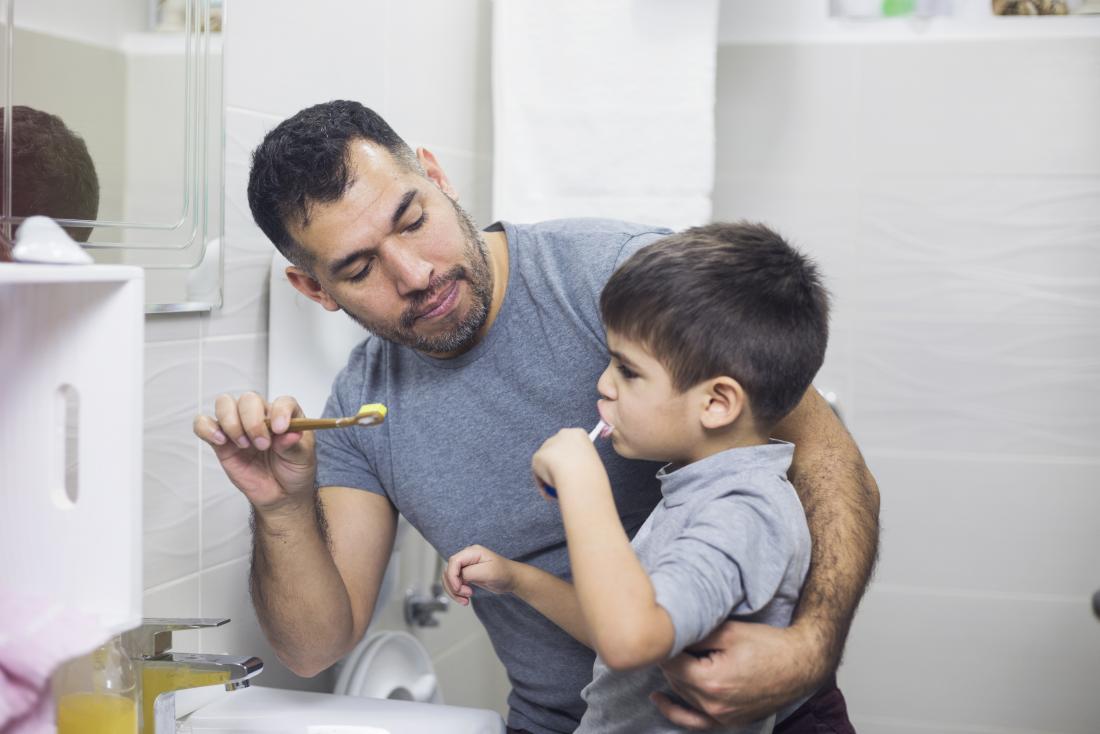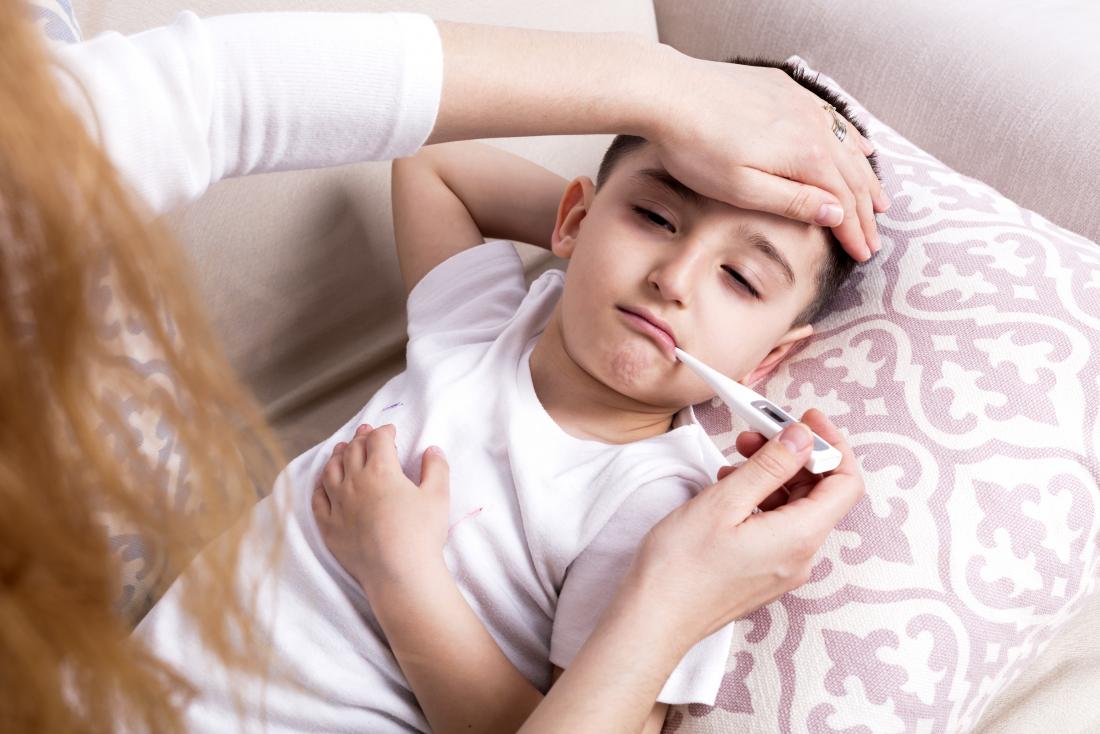These sores can develop on the tongue, under the tongue, and on the cheeks inside the mouth, as well as on the lips and gums.
In this article, learn more about the symptoms, as well as the causes and available treatments for gingivostomatitis.
What is gingivostomatitis?

Gingivostomatitis causes sores to develop inside the mouth.
Image credit: Klaus D. Peter, Gummersbach, Germany, 2011.
Gingivostomatitis is a contagious mouth infection that causes painful sores, blisters, and swelling.
It usually spreads through the saliva of an infected individual or by direct contact with a lesion or sore.
Gingivostomatitis is most common in young children, usually under 6 years old, but can also occur in adults. Older people may experience more severe symptoms.
Gingivostomatitis is sometimes called herpetic stomatitis because it is usually the result of infection by the herpes simplex virus. Herpes simplex also causes cold sores.
However, it is important to note that many different factors can cause the irritation and sores in the mouth that are characteristic of gingivostomatitis.
The general medical term for inflammation of the mouth and lips is stomatitis. Factors that can cause stomatitis include:
- herpes viruses
- enteroviruses, such as the coxsackievirus
- bacteria
- allergies
- exposure to irritating chemicals or other substances
- radiation and chemotherapy
Symptoms
The symptoms of gingivostomatitis include:
- pain around the gums and mouth
- red, swollen gums
- blisters on the gums, lips, tongue, cheeks, and roof of the mouth
- ulcers in the mouth
- fever
- drooling, especially in children
- bad breath
- reluctance to eat or drink
Some cases of gingivostomatitis may be subclinical, which means that the symptoms are not severe, or easy to identify and diagnose.
In other cases, some individuals may go through a period of feeling feverish and having general malaise before the sores develop.
Swollen gums and sores in the mouth make eating and drinking uncomfortable. This can cause children to refuse food and drinks.
One study found that 89 percent of children with gingivostomatitis drank less than usual. To prevent dehydration and poor nutrition, adults should monitor children’s consumption and ensure they are getting enough fluids.
Adopting a diet consisting of soft foods and avoiding citrus or carbonated beverages can help. In some cases, a person can apply numbing medication to provide relief at mealtimes.
In children
Gingivostomatitis is a common infection in children, with most cases developing between the ages of 6 months and 5 years old.
According to some research, the most common time to develop a gingivostomatitis infection is when a child is between 2 and 3 years old.
Causes

Poor oral hygiene can be a cause of gingivostomatitis.
The causes of gingivostomatitis include:
- infection with herpes simplex virus type 1 (HSV-1)
- infection with coxsackievirus
- poor brushing and flossing habits
HSV-1 is the most common cause of gingivostomatitis, accounting for about 90 percent of cases in children.
Herpes simplex virus 2 (HSV-2), while primarily associated with genital herpes, has been identified as the cause of some cases of gingivostomatitis in adults.
Diagnosis
To diagnose gingivostomatitis, a doctor will:
- ask about a person’s medical history
- look at the individual’s mouth, gums, and tongue
- examine the lesions or sores
Most of the time, a doctor can make a diagnosis based on the visual examination alone. Sometimes, they will take further tests, such as with a swab, to send away for laboratory analysis.
Treatment
Treating gingivostomatitis focuses on providing relief from the painful symptoms and getting rid of the infection.
Standard ways to reduce the discomfort associated with gingivostomatitis include:
- taking over-the-counter pain relievers, as directed
- rinsing the mouth with a saltwater solution (1/2 teaspoon of salt in 1 cup of warm water)
- using medicinal mouthwashes
- drinking plenty of water
- eating soft, bland foods, such as applesauce, mashed bananas, and warm oatmeal, that make eating less painful
A doctor may also prescribe acyclovir, which also helps treat chickenpox, herpes simplex, and shingles. Studies have found that the use of acyclovir:
Symptoms of gingivostomatitis usually disappear without medical treatment within 1 to 2 weeks, but the infection may recur.
People also need to take steps to prevent the spread of gingivostomatitis, particularly among young children.
The condition spreads through saliva and by touching the sores, so it is sensible to try to avoid close contact with infected people, and not to allow children with gingivostomatitis to share toys or personal items.
Outlook

If a child with gingivostomatitis develops a fever, contact a doctor.
Researchers report that sores typically clear up on their own, without scarring, in 5 to 7 days. More severe cases of gingivostomatitis clear up in 2 weeks.
Once individuals contract the herpes virus, recurrent infections are fairly common, affecting about 40 percent of people, according to some studies. Fortunately, the first outbreak is usually the most severe with subsequent ones less so.
Potential complications from gingivostomatitis include dehydration and encephalitis or swelling of the brain. Encephalitis is the more dangerous but much less frequent health problem.
Parents and caregivers for children with gingivostomatitis should watch out for signs of both conditions, including:
- a drop in energy or activity levels
- decreased urination and fewer bowel movements
- dry mouth
- a fever
- a headache
- a stiff neck
- sensitivity to light
People should contact a doctor if any of these symptoms develop.
Let’s block ads! (Why?)





